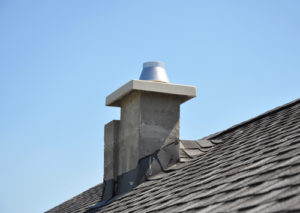There are many safety components put in place in your chimney system. These safety components range from devices that keep debris out of your chimney to construction methods designed to keep moisture from infiltrating your masonry. All safety components in your chimney system are very important, but one of these safety components was found to greatly diminish the chances of having a chimney fire when tested by the National Bureau of Standards (NBS). This chimney component is called a chimney liner. At Leonard & Sons, we can’t stress enough the importance of having a chimney liner. Let us help you understand why not having a chimney liner can put your home at serious risk of a chimney fire and what we can do to help.
How does a chimney liner work?
When have a fire burning in your fireplace for a long time, the inside of your chimney will naturally get hot. You may think that since your masonry is not flammable, that this is not a big deal. However, the bricks in your chimney can get so hot that they can cause any adjacent woodwork to catch fire. In fact, when the National Bureau of Standards tested chimneys that had no protection, they found that a chimney fire could ignite in as little as three and a half hours after starting your fire. Because of this, fire codes today require that there be protective insulation between your flue and the masonry in your chimney system. This line of protection is called a chimney liner.
Does my chimney have a liner?
Fire codes became a lot more strict in the 1940’s, so if your home was built after that, it is very likely that it has a chimney liner. However, if your home is older than that, you’ll want to have your chimney inspected by a Chimney Safety Institute of America (CSIA) certified chimney sweep to see if you have one. If it is discovered that your chimney doesn’t have a liner, you should not operate your fireplace again until one is installed. Even if you already have a liner in your chimney, you still need to have it inspected annually to determine if the your liner is showing any signs of weakening or cracking. Cracking in your liner can lead to a number of problems including masonry erosion and carbon monoxide exposure.
What type of liner should I get?
Most newly installed liners today are made of metal. Although we suggest different types of liners based on your fuel, we often use stainless steel. If you have an older liner that is made of clay, we can use a product called HeatShield® to maintain your liner.
If you aren’t sure about the condition of your chimney liner, you may be putting your home at risk. Don’t hesitate and contact Leonard & Sons today by calling 847-658-7659 or checking us out online to schedule an appointment today!
